- Home
- Larry Niven
All The Myriad Ways Page 9
All The Myriad Ways Read online
Page 9
Light follows the contours of the handkerchief, so that spaces which are really contiguous in four or more dimensions do not look contiguous when viewed across apparently fiat space.
If the universe does not in fact resemble a crumpled handkerchief, maybe we can make it resemble a crumpled handkerchief. It may be possible to bend the fabric of space by the judicious application of electromagnetic fields, until two points touch. At least we get no embarrassing duplication of passengers.
The embarrassment arises if two sets of machines are in operation at once, anywhere in the universe. At best, space will be bent in some unanticipated way, and nobody will get where he wants to go. At worst, the fabric of space comes apart like a too-often crumpled handkerchief.
DEVELOPMENT OF MECHANICAL TELEPORTATION:
Assume we have a teleportation transmitter and receiver. How we got these is a matter for science fiction; but once we have them we can move onto surer ground.
We assume that the principle does not involve beaming; it may involve tunnel diode effects or space-bending or something new.
So we've got two enclosed booths. Why booths?
Because of an old principle that two bodies cannot occupy the same space at the same time. Like a lot of old principles, this one isn't strictly true. Matter is mostly empty space. There is no reason why you can't teleport into a rock; there's plenty of room for your atoms and the rock's atoms. Trouble is, it'll kill you.
Teleporting into a mass of air will kill you too. There are energy factors involved, and also bends, embolisms, etc. Probably there will be an explosion.
So you need booths. Naturally the interior spaces are identical in size and shape. The transmitter booth includes air as well as the passenger or cargo. The receiver is evacuated. We teleport the air as well as the passenger and/or cargo.
If what we have are transceivers, we need not evacuate the receiver. We teleport its air to the transmitter as we teleport the cargo to the receiver.
With development, we may be able to do away with the booths. If we expand a spherical force field from a point (GREE stories, from Galaxy) to get a vacuum for the receiver, we need only a transmitter booth. Put the passenger in a pressure suit and we eliminate that booth; it doesn't matter how big a volume gets sent along as long as the volume of the receiver is bigger.
But- we'll have to start with booths.
Now turn to Figure 1 (page 92).
Booths A and B are used for the first stages of experiment, to find out if we can teleport reliably.
Once they are working well we move to step II: teleporting instruments from booth C to B and (if transceivers) back again. If conservation of energy holds, we expect a rise in temperature from teleporting down that cliff.
Booth D is built on railroad tracks. We set it moving to determine if conservation of momentum holds. Given relativity, we might as well use booth D as receiver only. Thus we can pad the back wall, in case conservation does hold.
Booths E and F test for continuous teleportation. Bullets are fired into the opening in E at various speeds. Which bullet will reach F before it strikes the back wall of E? This system could stand redesigning. Obviously we can't pad the back wall of E; we'd only teleport the padding to F. Thus we destroy a teleport booth every time the bullet hits the back wall of E. When the bullet teleports in time, it zings out of booth F and hits the scientist. If the scientist ducks, the coward, the bullet will still destroy booth B.
We can get better data with a long crossbow bolt, by measuring what length of the bolt gets teleported in time. But we destroy the booth with the arrowhead and clonk the scientist with the feathered end. I'm sure there's a better way to design this system.
PRACTICE OF MECHANICAL TELEPORTATION:
Here my theme becomes complex. I intend to demonstrate that any limitations we assume for our teleportation system are going to imply a society: one society for each set of limitations. Again, I will quote my sources where I can remember them, sometimes. But much of what follows is my own.
I
THE ASSUMPTION: We don't need a transmitter. Our teleport receiver will bring anything to itself, from anywhere. Limitations may exist as to distance or mass of cargo.
THE RESULT: Thieves capable of stealing anything from anyone in perfect safety. Such machinery was discovered by Seaton, and later by DuQuesne, in THE SKYLARK OF SPACE. In practice, anyone who has such machinery is king of the world. If many men have transmitterless receivers, society falls apart. When society stops making parts for the machines, the machines fall apart, and everything starts over.
II
THE ASSUMPTION: No receiver is needed. Our teleport transmitter will place its cargo anywhere we choose.
THE RESULT: We can put a bomb anywhere. The idea was used at least once, in THE PERSON FROM PORLOCK. In practice, a government that owned one of these would-again-own the world. Two such governments would probably bomb each other back to a preteleport level of civilization. Presumably it could happen any number of times.
III
Given the assumptions in (I) and (II) you don't really get a society. You get a short war. Hence most stories assume that teleportation requires both a transmitter and a receiver.
Let's do the same. Let us further assume that transmitters (transceivers?) look like telephone booths. You walk into a booth, you put a coin in the slot, you dial. You're elsewhere.
How do they work? We assume either space-bending or the tunnel diode effect. We assume the operation is relatively cheap: no more than a few quarters in the slot. Finally, a slug in the slot will send the customer straight to police headquarters.
THE RESULT: All present transportation becomes obsolete: cars and trucks and freeways, ships and docks, airliners and airports, trains and train stations. What do we do with a continental net of freeways once the cars and busses have disappeared? You use them for drag races and bicycle riding; you put houses on them or turn them into parks. Or you pack them with cars because there's no place else to put the damn useless cars. Not only freeways and turnpikes, but streets and roads and even sidewalks become obsolete. In business districts you keep the sidewalks for window shopping.
Elsewhere, pfftt!
The mind boggles. Assume the population problem continues in the direction it's going. Then, as Isaac Asimov has suggested, new generations could grow up without seeing the exterior of any building, including their own homes. There might soon be no countryside to see in any case, and precious few exteriors to buildings. Without need for streets or sidewalks, there would be no- space between buildings; they would be built wall to wall, or in units a mile cubic. And the people get their exercise by riding bicycles between two open booths arranged like E and F in Figure I.
IV
But suppose there are limitations on the booths? For each assumed limitation one gets a different society.
Let's take a few examples.
THE ASSUMPTION: Booths are expensive to operate.The price for any jump, regardless of distance, is two hundred dollars. (A reasonable restriction. Any spacestressing operation might well cost as much as any other. Ditto for a single tunnel-diode operation.)
THE RESULT: Cars, motor scooters, busses will remain. Except for emergencies, nobody would use booths for distances shorter than a transcontinental flight. But airplanes would disappear, except perhaps for cargo flights.
Change the price and you change the result. As price goes down, freight traffic by train and truck dwindles, and then. even automobiles begin to go. Raise the price to a few thousand dollars, and only spacecraft disappear.
THE ASSUMPTION: The booths are cheap, a couple of bucks a jump, but limited as to distance. Ten miles, let us say, is the upper limit.
THE RESULT: A traveler would move in "hops", naturally. But there would come a point where an airplane is cheaper and more convenient, or both, than a succession of teleport booths. Thus, cars would go, but airplanes and shipping would remain.
Change the limiting distance and, again, you
change the society. At a mile a jump only the cars go. At a thousand miles a jump, only spacecraft remain.
THE ASSUMPTION: Teleportation is limited by the Laws of Conservation of energy and Momentum.
THE RESULT: Not very different from above. Cars would go, airplanes would remain. By teleportation we could not travel long distance north and south; we would have to do it on short hops. The longer the hop, the harder momentum would jerk the passenger sideways each time.
Traveling east, our momentum would lift us a few inches from the chair of the receiver booth on each hop. (Yes, I said chair. You might try it standing up, but I wouldn't.) Traveling west would be worse: momentum would slam you down hard. A New Yorker might prefer to reach San Francisco via the western route, in a line of booths crossing the Atlantic and Pacific Oceans.
(Assume a passenger is at the equator, teleporting straight east a distance of X miles.
Then X/4000 is the angle $ of his jump in radians. For X small, we take sine$=$ and get:
X *1000/4000=X/4 [We multiplied the sine of the angle, equal to the angle itself for small angles given in radians, by the rotational velocity of the Earth.]
X/4 is the velocity at which the passenger gets lifted off his feet. Going west, he gets slammed down, same equation. For small angles, the equation holds elsewhere than at the equator. Decreasing the distance from the Earth's axis of rotation decreases the speed of rotation, but increases the angle of shift.)
Notice one important exception. We can travel from the northern hemisphere to the southern in perfect comfort, provided the departure point and destination are at corresponding latitudes.
Elevators become more important than ever. In Earth's gravitational field, at ground level, we lose-seven degrees Fahrenheit for every mile we teleport upward and we gain as much going downhill. Elevators are more comfortable.
So: you want to go skiing in the Swiss Alps, at St. Moritz. From the United States your best bet is to take a plane to someplace with a big landing field, ride an elevator half a mile up to a teleportation booth, then teleport to St. Moritz. Do it any other way and you wind up sick for a couple of days. But from New York you can reach Angol, Chile in one jump!
So much for booths. They still look like our best attempt at prophecy; but let's try some wilder ideas and see what we get.
THE ASSUMPTION: Open teleport discs. You step on a disc, it teleports you to another disc. Cost, pennies per thousand trips.
THE RESULTS: All present transportation disappears. With the proper setup, you can walk anywhere on the planet. Figure 2 is a design for intercity transportation, but it can easily be adapted for longer distances. The blocks shown could be lines of longitude and latitude; their length is optional.
For the rectangular city layout shown, we simply walk in the direction we wish to go. The distance between the receiver plate, at the center of the intersection, and the next transmitter disc is about three paces. In three paces one covers a block, whose length, I repeat, is optional. Perhaps there would be faster lanes through the center of town, and faster still between towns: intersections a mile or ten miles apart. To get out of the system one walks around the final disc and goes window shopping or whatever.
The biggest advantage is that we can give up all the endless dialing!
THE ASSUMPTION: Our transmitter is hand sized. We can hang it from our belt. It has (oh, well) a telephone-type dial on it. The receiver is bigger: an open platform, either a small plate at home, in vestibule, or a community receiver the size of a public square. Cost is equivalent to the cost of using a telephone. There are (if necessary) compensators for momentum-and heat-transfer in the receiver plates.
THE RESULT: Bester's THE STARS MY DESTINATION, with minor changes. No mazes behind the doors; simply unlisted receiver numbers.
VI
Shall we design a few spacecraft? Limited teleportation might not make spacecraft obsolete. It might even be used to improve the spacecraft themselves.
THE ASSUMPTIONS: Teleportation requires both a transmitter and a receiver. Conservation holds. Teleportation is instantaneous, and does not involve beaming.
THE RESULT: See Figure 3. The ship consists mainly of a couple of rocket motors, fuel tanks, and an open-ended teleportation receiver open to the rear. You can leave it open because, in vacuum, you don't need to worry about air getting in the receiver.
The ship, unmanned, is fired from Earth orbit or from further out. Probably it should be fired in the direction of the galactic core, where we anticipate more traffic. By firing the ship from, say, Jupiter orbit, we can pack quite a lot of fuel-water, for reaction mass-outside the ship. (See Isaac Asimov, THE MARTIAN WAY.)
We use all the fuel except a reserve for steering. The ship coasts.
It passes through a star system. Let it be about the size of the solar system; then we have ten hours (assuming our ship is near lightspeed) to shove an entire prefab colony into the Earth-based transmitter. If all ten hours are used, then the colony building materials are strewn across the entire system. Each piece of equipment arrives at rest with respect to Earth, and thus leaves the receiver at a speed approaching lightspeed. (Now you know why we put a hole in the receiver.)
Last through the receiver are the ships designed to collect all this crap. Since they are manned, we had better not send them from Earth. Conservation of energy would freeze the pilots to ice in an instant. Consider the irony: to keep them from freezing, we must ship them from Pluto orbit!
It might be more efficient to send through the teleport system only a few ships and another prefab teleport receiver. The rest of the colony comes through the second receiver.
In any case, notice four advantages. You don't have to carry the entire cargo, or waste fuel accelerating it. You don't decelerate the ship, so none of your limited fuel supply need be reserved for that purpose.
The colonists need not twiddle their thumbs for decades. And the ship can be re-used.
Can and will. You just let it coast. Every time it comes near a star system, you have another colony. In eighty thousand years we leave a line of colonies clear across the galaxy, before we finally run out of stars.
Less peaceful societies would shove war fleets through the teleport system. It is hard to imagine a safer way to make war. The fleet is strewn all across the system, with all the warships at rest with respect to the universe at large. And how could the target system counterattack? To reach the invading system, they would have to catch a ship which has had years to accelerate to its tremendous velocity, and which is long gone into interstellar space before the attack can even begin.
During the Boston speech, a member of the audience suggested that teleportation be used to fuel the above craft. Specifically: the motor is a receiver, Open, with a flared nozzle attached. We drop a transmitter on Jupiter. Presto! Hellishly dense high-pressure gas expands explosively into the vacuum of space, driving the ship forward. Fuel supply: inefficient compared to ion drives or the like, but almost literally unlimited.
It won't work. Rather, it won't work for long. Remember, we have assumed that conservation holds.
The motor's exhaust velocity is the ship's own limiting velocity if we use teleportation to fuel the ship. Jupiter's atmosphere wouldn't expand fast enough to be useful. Even with a fusion drive, we lose momentum every time a droplet of hydrogen reaches the fuel tank. We have to get it back by firing the droplet through the rocket motor. When the two velocities balance... we can't go any faster.
Total conversion of matter to light does give us unlimited velocity. Then we have only the problem of what to do with the incoming fuel. We always have that problem. A droplet of hydrogen moving at a tenth of lightspeed would vaporize any fuel tank we can build today. Maybe in the future... with new materials... plenty of padding... springs...
Let's try something else.
THE ASSUMPTIONS: The distance one can teleport is relatively restricted. The greater the curvature of space-that is, the greater the proximity to a large mass-the
shorter is the limiting distance.
We will assume that on Earth the limiting distance is two feet; around Mars's orbit, some miles; between stars, a few light minutes. Attempt to send a mass beyond the limiting distance, and it will emerge from the receiver as a fluid or a fine dust. The curvature of space distorts the relationships between atoms too greatly.
Again, we assume the conservation laws hold.
THE RESULTS: Feeble as far as true teleportation is concerned. We can teleport fluids, so fuel tanks disappear except for storage tanks and spacecraft. The best we can do for spacecraft is fuel a booster, with a heavily armored fuel tank, designed to lift spacecraft out of a gravity well at low speed. But we can use the system to build a ship...
See Figure 4 (page 103). We'll call this peculiar object the "end-teleport drive," and we'll say that it teleports itself onto its own front end. I invented it many years ago, but I never had the nerve to write a story about it.
Notice that if you push the button, the ship teleports onto its own front end; but if you hold the button down, it will teleport repeatedly, in a steady stream of images. One jump brings the ship to position 2; but the moment it begins to occupy position 2 it wants to be at position 3; as that image starts to form the ship wants to be at position 4, et cetera. If teleportation is rapid enough we can use it for transportation.

 The Integral Trees - Omnibus
The Integral Trees - Omnibus A World Out of Time
A World Out of Time Crashlander
Crashlander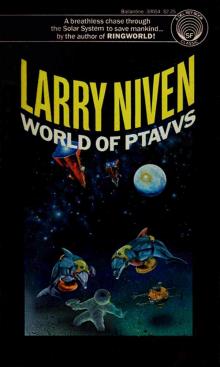 The World of Ptavvs
The World of Ptavvs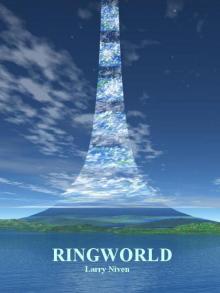 Ringworld
Ringworld Juggler of Worlds
Juggler of Worlds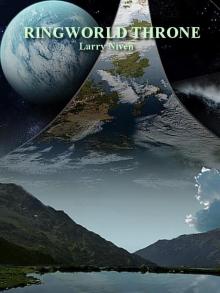 The Ringworld Throne
The Ringworld Throne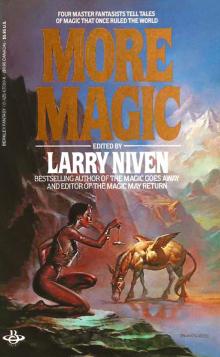 The Magic Goes Away Collection: The Magic Goes Away/The Magic May Return/More Magic
The Magic Goes Away Collection: The Magic Goes Away/The Magic May Return/More Magic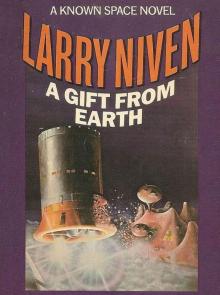 A Gift From Earth
A Gift From Earth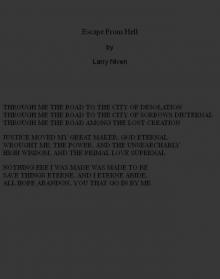 Escape From Hell
Escape From Hell Larry Niven’s Man-Kzin Wars - VII
Larry Niven’s Man-Kzin Wars - VII Rainbow Mars
Rainbow Mars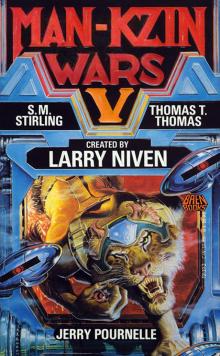 Larry Niven’s Man-Kzin Wars - V
Larry Niven’s Man-Kzin Wars - V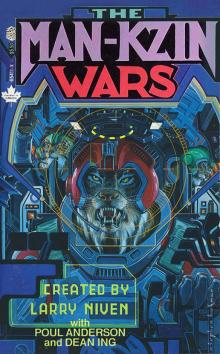 Larry Niven’s Man-Kzin Wars - I
Larry Niven’s Man-Kzin Wars - I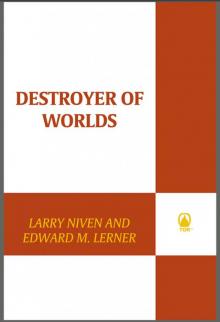 Destroyer of Worlds
Destroyer of Worlds Man-Kzin Wars XIV
Man-Kzin Wars XIV Treasure Planet
Treasure Planet N-Space
N-Space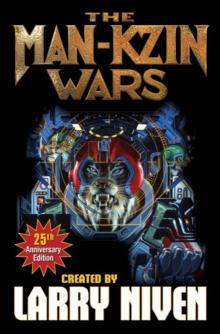 Man-Kzin Wars 25th Anniversary Edition
Man-Kzin Wars 25th Anniversary Edition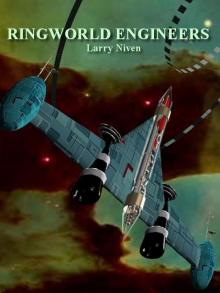 The Ringworld Engineers
The Ringworld Engineers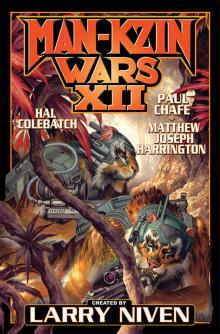 Larry Niven’s Man-Kzin Wars - XII
Larry Niven’s Man-Kzin Wars - XII The Magic May Return
The Magic May Return Tales of Known Space: The Universe of Larry Niven
Tales of Known Space: The Universe of Larry Niven The Magic Goes Away
The Magic Goes Away Larry Niven’s Man-Kzin Wars - III
Larry Niven’s Man-Kzin Wars - III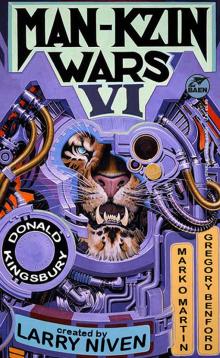 Larry Niven’s Man-Kzin Wars - VI
Larry Niven’s Man-Kzin Wars - VI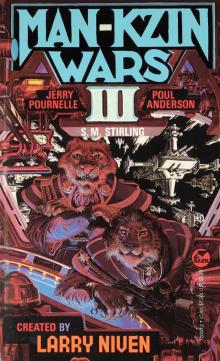 Man-Kzin Wars III
Man-Kzin Wars III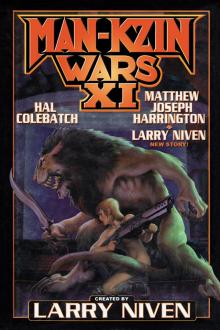 Larry Niven’s Man-Kzin Wars - XI
Larry Niven’s Man-Kzin Wars - XI Inferno
Inferno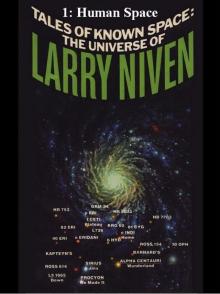 01-Human Space
01-Human Space Larry Niven’s Man-Kzin Wars - XIV
Larry Niven’s Man-Kzin Wars - XIV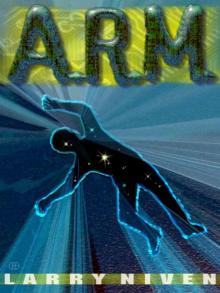 The Long Arm of Gil Hamilton
The Long Arm of Gil Hamilton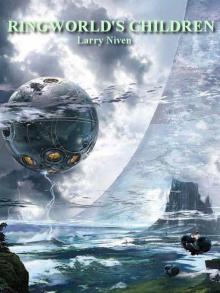 Ringworld's Children
Ringworld's Children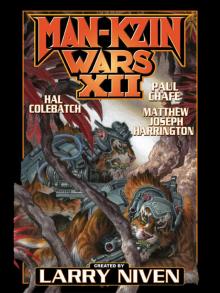 Man-Kzin Wars XII
Man-Kzin Wars XII Scatterbrain
Scatterbrain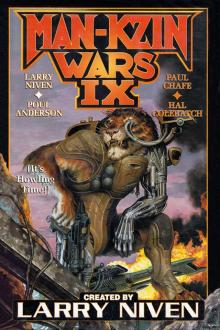 Man-Kzin Wars 9
Man-Kzin Wars 9 Man-Kzin Wars XIII
Man-Kzin Wars XIII Flatlander
Flatlander Man-Kzin Wars V
Man-Kzin Wars V Destiny's Forge
Destiny's Forge Scatterbrain (2003) SSC
Scatterbrain (2003) SSC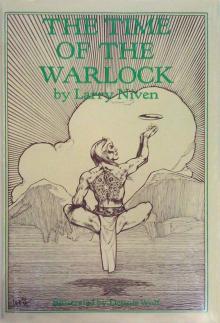 The Time of the Warlock
The Time of the Warlock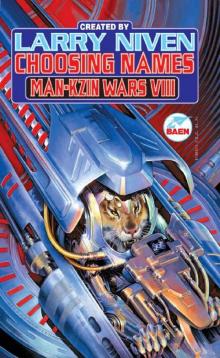 Choosing Names: Man-Kzin Wars VIII
Choosing Names: Man-Kzin Wars VIII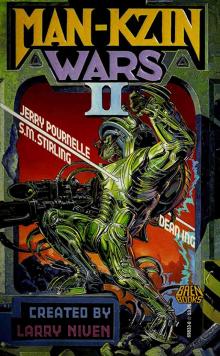 Larry Niven's Man-Kzin Wars II
Larry Niven's Man-Kzin Wars II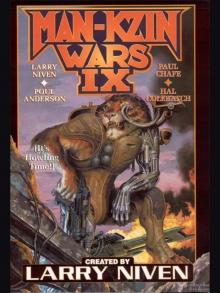 Man-Kzin Wars IX (Man-Kzin Wars Series Book 9)
Man-Kzin Wars IX (Man-Kzin Wars Series Book 9)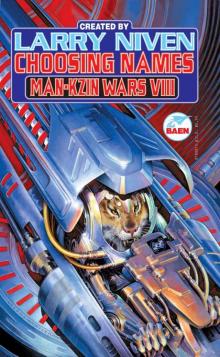 Choosing Names: Man-Kzin Wars VIII (Man-Kzin Wars Series Book 8)
Choosing Names: Man-Kzin Wars VIII (Man-Kzin Wars Series Book 8)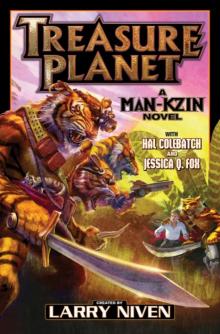 Treasure Planet - eARC
Treasure Planet - eARC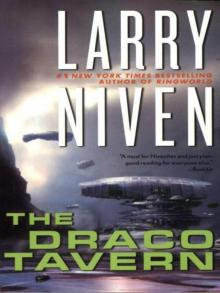 The Draco Tavern
The Draco Tavern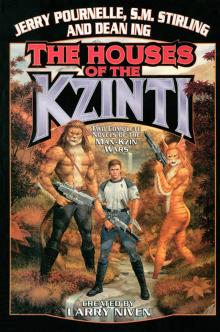 Larry Niven’s Man-Kzin Wars - The Houses of the Kzinti
Larry Niven’s Man-Kzin Wars - The Houses of the Kzinti The Fourth Profession
The Fourth Profession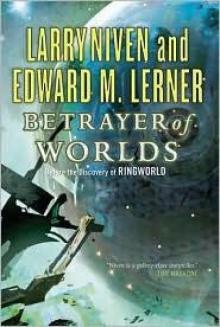 Betrayer of Worlds
Betrayer of Worlds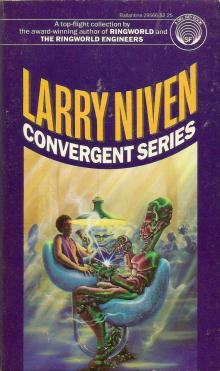 Convergent Series
Convergent Series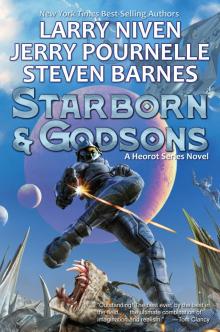 Starborn and Godsons
Starborn and Godsons Protector
Protector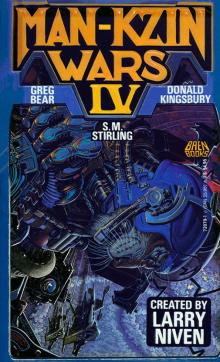 Larry Niven’s Man-Kzin Wars - IV
Larry Niven’s Man-Kzin Wars - IV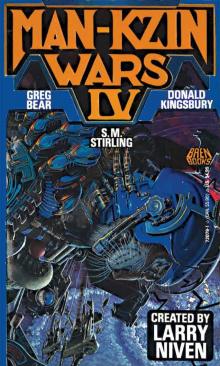 Man-Kzin Wars IV (Man-Kzin Wars Series Book 4)
Man-Kzin Wars IV (Man-Kzin Wars Series Book 4) The Legacy of Heorot
The Legacy of Heorot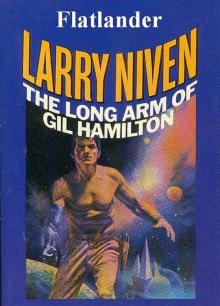 03-Flatlander
03-Flatlander Larry Niven’s Man-Kzin Wars - XIII
Larry Niven’s Man-Kzin Wars - XIII Destiny's Road
Destiny's Road Fate of Worlds
Fate of Worlds Beowulf's Children
Beowulf's Children 04-Protector
04-Protector The Flight of the Horse
The Flight of the Horse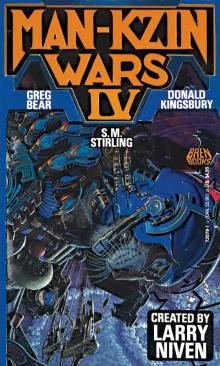 Man-Kzin Wars IV
Man-Kzin Wars IV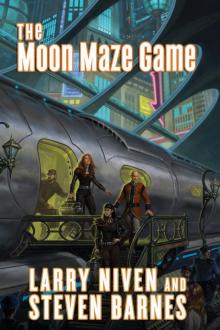 The Moon Maze Game dp-4
The Moon Maze Game dp-4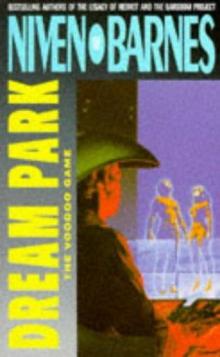 The California Voodoo Game dp-3
The California Voodoo Game dp-3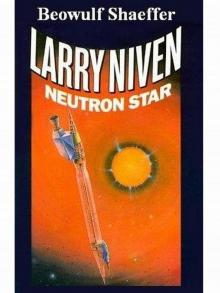 07-Beowulf Shaeffer
07-Beowulf Shaeffer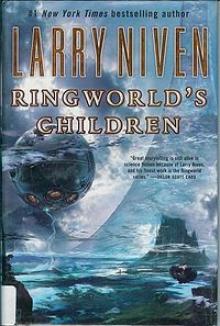 Ringworld's Children r-4
Ringworld's Children r-4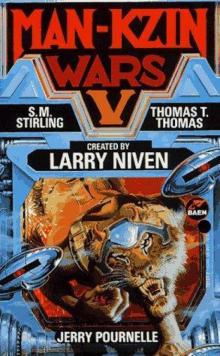 The Man-Kzin Wars 05
The Man-Kzin Wars 05 The Man-Kzin Wars 12
The Man-Kzin Wars 12 Lucifer's Hammer
Lucifer's Hammer The Seascape Tattoo
The Seascape Tattoo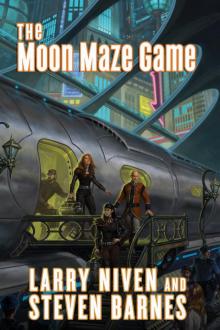 The Moon Maze Game
The Moon Maze Game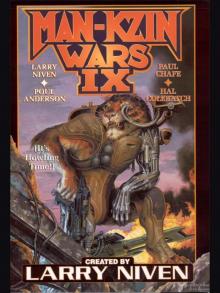 Man-Kzin Wars IX
Man-Kzin Wars IX All The Myriad Ways
All The Myriad Ways More Magic
More Magic 02-World of Ptavvs
02-World of Ptavvs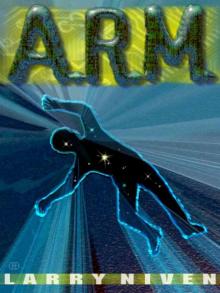 ARM
ARM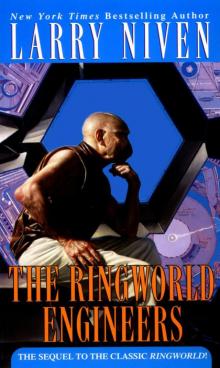 The Ringworld Engineers (ringworld)
The Ringworld Engineers (ringworld)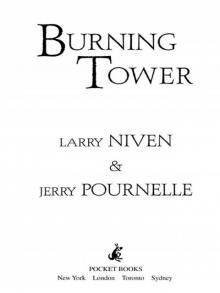 Burning Tower
Burning Tower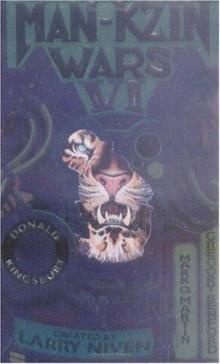 The Man-Kzin Wars 06
The Man-Kzin Wars 06 The Man-Kzin Wars 03
The Man-Kzin Wars 03 Man-Kzin Wars XIII-ARC
Man-Kzin Wars XIII-ARC The Hole Man
The Hole Man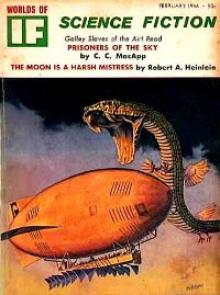 The Warriors mw-1
The Warriors mw-1 The Houses of the Kzinti
The Houses of the Kzinti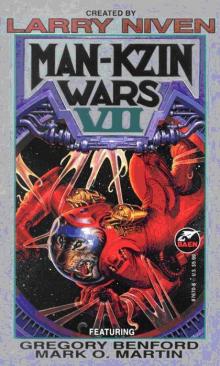 The Man-Kzin Wars 07
The Man-Kzin Wars 07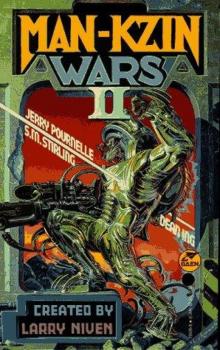 The Man-Kzin Wars 02
The Man-Kzin Wars 02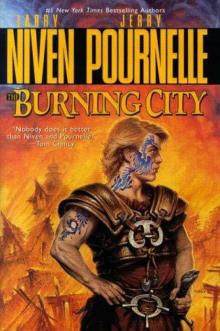 The Burning City
The Burning City At the Core
At the Core The Trellis
The Trellis The Man-Kzin Wars 01 mw-1
The Man-Kzin Wars 01 mw-1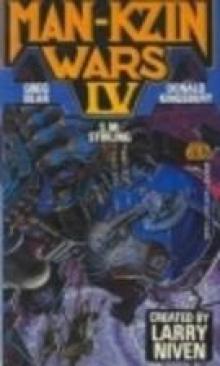 The Man-Kzin Wars 04
The Man-Kzin Wars 04 The Man-Kzin Wars 08 - Choosing Names
The Man-Kzin Wars 08 - Choosing Names Dream Park
Dream Park How the Heroes Die
How the Heroes Die Oath of Fealty
Oath of Fealty The Smoke Ring t-2
The Smoke Ring t-2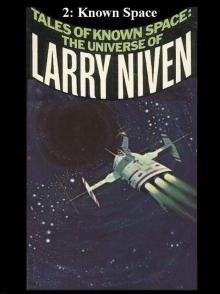 06-Known Space
06-Known Space Destiny's Road h-3
Destiny's Road h-3 Flash crowd
Flash crowd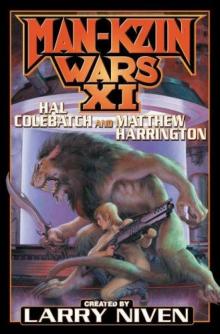 The Man-Kzin Wars 11
The Man-Kzin Wars 11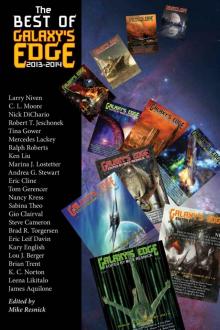 The Best of Galaxy’s Edge 2013-2014
The Best of Galaxy’s Edge 2013-2014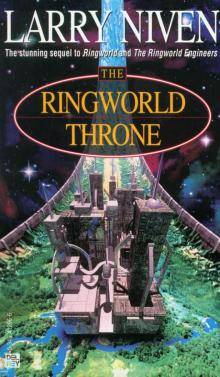 The Ringworld Throne r-3
The Ringworld Throne r-3 A Kind of Murder
A Kind of Murder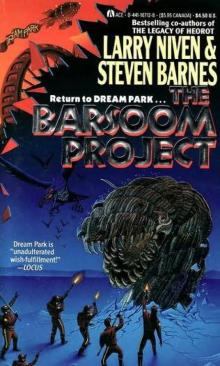 The Barsoom Project dp-2
The Barsoom Project dp-2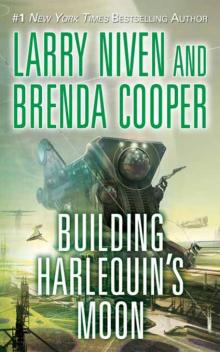 Building Harlequin’s Moon
Building Harlequin’s Moon The Gripping Hand
The Gripping Hand The Leagacy of Heorot
The Leagacy of Heorot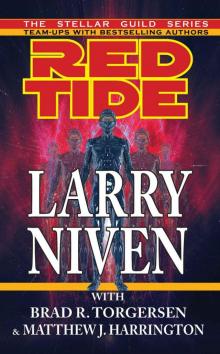 Red Tide
Red Tide Choosing Names mw-8
Choosing Names mw-8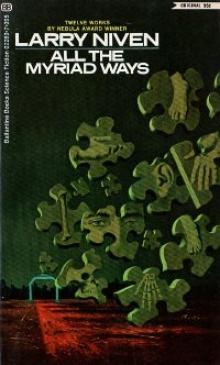 Inconstant Moon
Inconstant Moon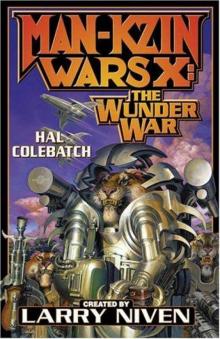 The Man-Kzin Wars 10 - The Wunder War
The Man-Kzin Wars 10 - The Wunder War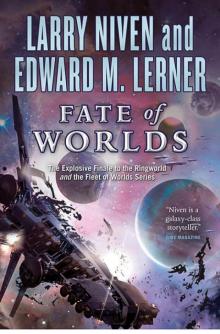 Fate of Worlds: Return From the Ringworld
Fate of Worlds: Return From the Ringworld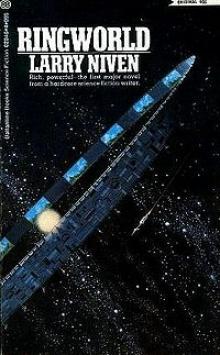 Ringworld r-1
Ringworld r-1 05-A Gift From Earth
05-A Gift From Earth The Integral Trees t-1
The Integral Trees t-1 Footfall
Footfall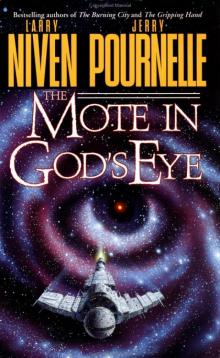 The Mote In God's Eye
The Mote In God's Eye Achilles choice
Achilles choice The Man-Kzin Wars 01
The Man-Kzin Wars 01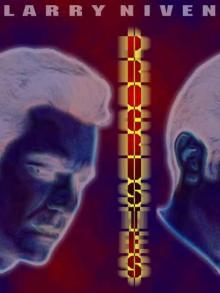 Procrustes
Procrustes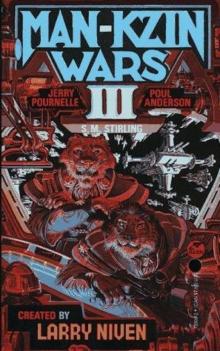 The Man-Kzin Wars 03 mw-3
The Man-Kzin Wars 03 mw-3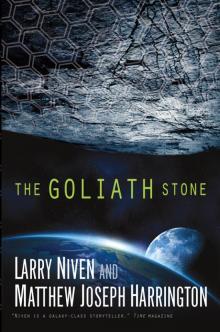 The Goliath Stone
The Goliath Stone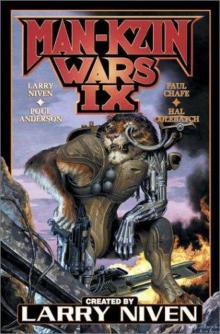 The Man-Kzin Wars 09
The Man-Kzin Wars 09